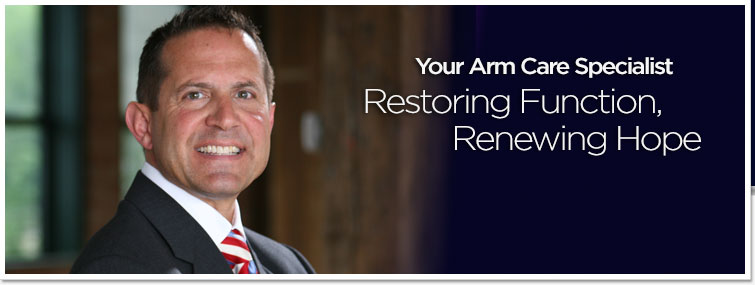NOTICE:
Our Practice has MOVED
Our new location is:
Suite 405
1815 South Clinton Ave
Rochester, NY, 14618.
The NEW phone number is 585-565-3500
Our Practice has MOVED
Our new location is:
Suite 405
1815 South Clinton Ave
Rochester, NY, 14618.
The NEW phone number is 585-565-3500

For appointments call
585.565.3500
Fax Number:
585.434.4081
585.565.3500
Fax Number:
585.434.4081

August 24th, 2008
It may be assumed that a fracture of the "ball" portion of the shoulder's "ball & socket" joint is a serious enough problem, that when diagnosed by xray in an Emergency room, prompt referral to a surgeon and immediate surgery is necessary. What may not be all that well understood is the necessity that referral be to an Upper Extremity Expert with the requisite experience to advise not merely whether surgery is needed, but what kind, and when. Yesterday I operated on a 60 yo woman with a severe enough fracture that it required replacement of the "ball". The surgery went very well, but its complexity stimulated me to share my thoughts today.The functional consequence of a proximal humerus fracture can be extreme, but, if a fracture is able to be fixed (usually with innovative techniques which provide rigid fixation), early motion may be possible----and it's perfectly reasonable to expect that the fracture will heal and that functional range of motion may return. However, there are fractures that are not fixable (like yesterday's)----and in such cases, the "Ball" needs to be replaced. Such a procedure is essentially a "joint replacement" similar to knee and hip arthroplasty, except that the "socket" usually is not replaced--which makes the procedure a "Hemiarthroplasty". Further, the fractured bones to which the rotator cuff are attached (the tuberosities) need to be securely fixed--otherwise functional motion is unlikely to return. I use a technique popularized by renownd French surgeon, Giles Walsh, which provides superb osteosynthesis of the tuberosities.
The newest development when it comes to restoring overhead function following fracture, particularly in ones 70's and later, is the use of reversed arthroplasty, rather than fixation or hemiarthroplasty. This "nonanatomic" prosthesis obviates the necessity for a functional rotator cuff/ healed tuberosities, thus improving the liklihood of "overhead' function returning.
And so, "Caveat emptor" when it comes to your surgical care. Make certain that you avail yourself of the period of time between your initial xray, and a visit to the operating room. Make sure you understand why surgery is necessary as opposed to letting the fracture heal as is in a sling. And, if surgery is necessary, make sure you understand why it can be fixed as opposed to "replaced". Each of these issues will impact on your functional outcome. Most importantly, if you feel as though you would benefit from a second perspective/consultation, don't wait too long, as most of the time, such fractures are ideally fixed within the 1st 1-2 weeks.
For more information please contact me on the contact dr tomaino section of this website.
*POST EDITED BY DR. TOMAINO.
Replies
No replies!



